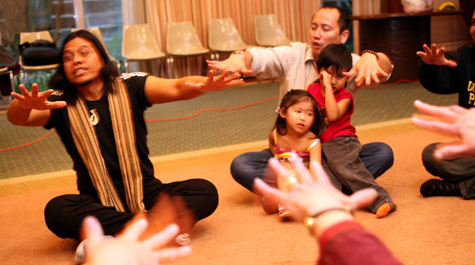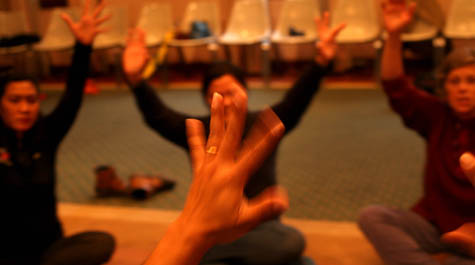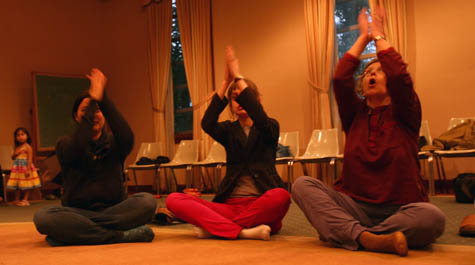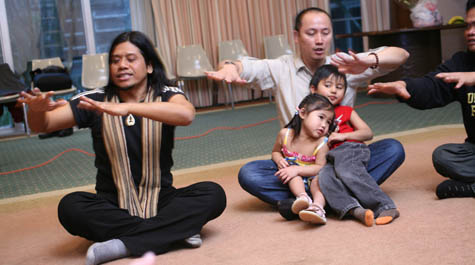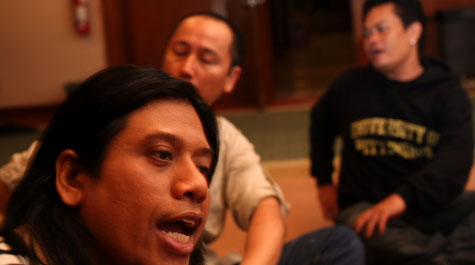Balinese performers share with W&M community
The workshop came a day after Wayang Kali, an experimental shadow theater troupe, performed in the Kimball Theatre as the final event in this year’s Ewell Concert Series.
The show, which was directed by I Made Sidia, recounts “the traditional Hindu Mahabharata tale from the perspective of Kali, the Goddess of Death,” according to the Ewell Concert brochure. It blends contemporary and traditional elements of Balinese shadow theater and features narration and poetry by acclaimed Indonesian author Goenawan Mohamad.
Shadow theater is used in Balinese temple ceremonies to tell portions of the Hindu Mahabharata and Ramayana epics. The shadow master, or “dalang,” sits behind a screen and control dozens of carved leather puppets to tell the stories.
Monday’s Balinese dance workshop was offered in conjunction with the Wayang Kali performance. During the workshop, I Made Sidia, one of Bali’s most renowned shadow masters, spoke about his background and family, the origins of the Bali’s dances and their uses today. A workshop with the troupe’s musicians was also offered to composition students on Sunday afternoon at the Kimball Theater.
According to Francis Tanglao-Aguas, director of Asian Studies and assistant professor of theatre, speech, and dance, performance in Bali is for the protection of the community because all performance and art is “dedicated and done for the pleasure of the gods.”
“These ‘gods’ are a combination of the pantheon of Hindu gods as well as the indigenous Balinese spirits and gods which the Balinese held on to during the conversion to Hinduism of the islands,” he said. “As a result, the word ‘dance,’ ‘theatre,’ ‘stage-play’ and even ‘performance’ all fall short in translating what truly happens when all these four facets are utilized in Bali.”
Anna Wagner, a junior majoring in art, went to both the shadow theatre performance and Monday’s workshop. She said she really enjoyed the performance and wanted to learn more about why they put everything together the way they did and how the performers got involved in it.
“I’m making masks and I’m thinking about doing something like this eventually, so I like the way they are all working together and how they combined puppetry and craft and music. It was really engaging,” she said.















